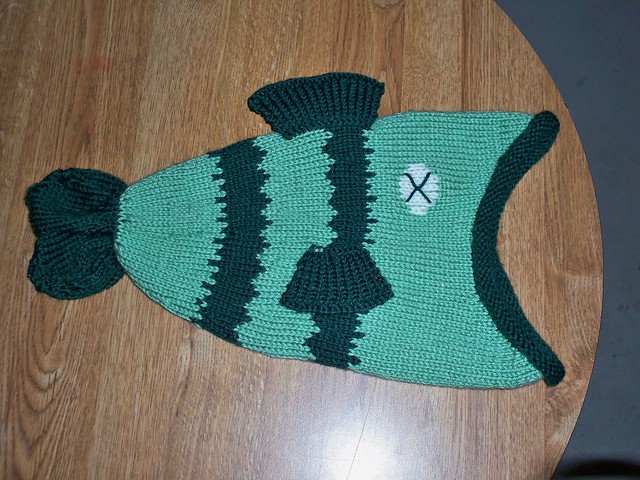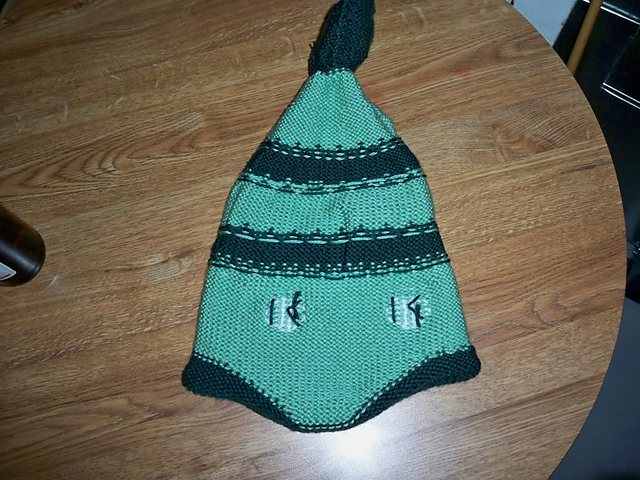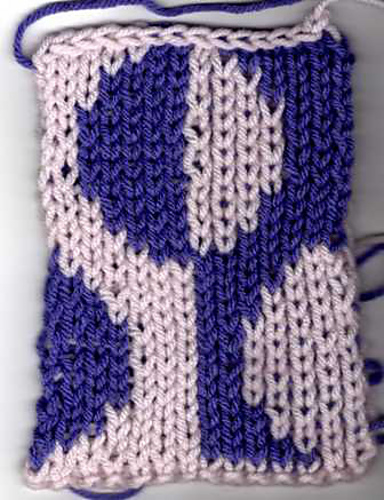Most common I think is stranded color work. Fair Isle is a form of stranded color work but not all stranded color work is Fair Isle.
Stranded color work is the simple process of working multiple colors in 1 row and carrying the one not used along the back. If the strand is to be carried for more than a few stitches it should be tacked up as you knit along the back to reduce the chance of long floats being snagged. I used stranded color work when I worked my Dead fish hat.


The eyes on the hat are worked in a duplicate stitch. This is a way to add color to a finished project. Instead of knitting the color as you work it you thread a yarn needle and trace the stitches with the new color to add a layer of color on top.
Fair Isle is a more intricate form of color work which has a rich history in origins and design. Only 2 colors are used in any given row but one color is switched out after only a couple rows. Fair isle is traditionally worked in the round and than the knitting is cut to create openings for sweaters and front openings. It must be steeked as a prep to cutting the yarn to prevent it from unraveling.
This is an example of traditional Fair Isle

Intarsia is a form of color worked used to add large blocks of color to a solid background. This technique does not require carrying your yarn on the back of the project. The different colors are held on bobbins and hang from the project when not being used. To transition between the 2 you must wrap your colors around each other to make the knitting flawless.
Here is a good example of intarsia

the technique used to create intarsia is not limited to adding blocks of color to a project but can be used to add borders of diffrent colors while you knit.
Slip stitch is another technique which you do not carry any colors and only work one color per row. For slip stitch designs you slip the opposing color which pulls it over the background color. This is an afghan I am making that uses slip stitch. It is worked in 6 rows of color worked in stockinette separated by 4 rows of garter (which is the gray). I slip 2 stitches while I knit the color portions and than I connect it with the gray when I knit my next band of gray which pulls the gray over the colored background.
Also I have added an edging on this in gray which is 4 stitches wide on either side. to do this I use the intarsia technique and use a bobbin to hold my gray yarn for the opposite side so this blanket has 3 strands of yarn coming off of it but only one is worked at any given time (I carry the unused strands up the edges between the color and the gray). the back just has colored bands and you cannot see the front pattern on the back.
When this photo was taken I was about 1/2 way through a band of color and you can see how the 2 gray stitches are slipped and starts to pull up. This is a stitch pattern found in the book A Treasury of Knitting Patterns
 Double knitting is a technique that has you knitting 2 sides at 1 time. both sides are the right side. Often double knit designs provide a negative image on either side of the opposing side. Double knitting also can be used to create 2 completely different designs on either side of the fabric. Here is a sample I did of a double knit swatch. this was my 1st double knit so the stitches are a bit wonky. This is a pattern I pulled out of the reversible knitting book
Double knitting is a technique that has you knitting 2 sides at 1 time. both sides are the right side. Often double knit designs provide a negative image on either side of the opposing side. Double knitting also can be used to create 2 completely different designs on either side of the fabric. Here is a sample I did of a double knit swatch. this was my 1st double knit so the stitches are a bit wonky. This is a pattern I pulled out of the reversible knitting bookIf this was done in the more standard version of double knitting the reverse side of the spots would be a negative image of what you see here.
This more advanced form of double knitting requires you to use circular needles and you have to slide your work back and make 2 passes for each side before turning your work.
this is side A
 and this is side B
and this is side B
1 comment:
There's another method for colorwork called Jacquard Knitting. I just read an article on it not too long ago. It's similar to stranded except that instead of leaving long tails in the back it leaves what look like bumpy stitches of the opposite color on the back.
Post a Comment